Blame it on the global pandemic or any media influence, but pet spending and the idea that pets are family members drive pet ownership to record highs.
There’s a reason the pet food industry and pet insurance market are regular topics discussed on Fortune Business Insights. U.S. pet owners indulge their pets not just with premium food but with expensive services.
To understand pet ownership statistics and how they can influence ownership spending, here is the data that suggests our pets are consuming more of our time and money. They already possess all of our hearts!
Most Important Stats to Know
- In 2023, U.S. Citizens Spent $147 Billion on Their Pets
- The Number of Insured Pets in the U.S. Has Increased by 17.1%
- Black Americans Spend the Least At 0.3% on Their Pets
- Dog Owners Spend $912, and Cat Owners Spend $653 Annually
- The Pet Care Market Was worth $246.6 Billion in 2023
- 33% of Millennials Own at Least One Pet
- Americans Spent $64.4 Billion on Pet Food and Treats in 2023
How Many Americans have pets?

Although there isn’t much information on pet owners, two out of three U.S. households now home a pet. 86.9 million households, which equates to 66% in the US, own at least one pet.
According to pet industry statistics, dogs are still the go-to pets for Americans, followed by cat owners, and there is one reptile for every ten dogs.
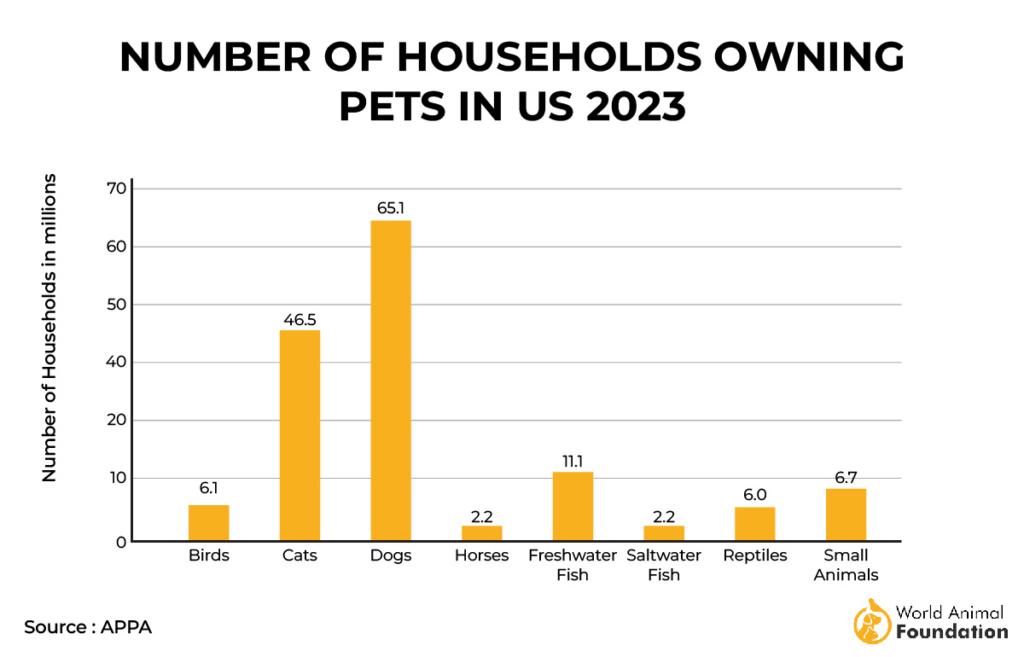
How Much Do Americans Spend on Their Pets

Pet ownership comes with costs, but that doesn’t mean it’s not attainable for all income levels. Pet spending is at approximately 1% of income for Americans.
In 2023, U.S. Citizens Spent $147 Billion on Their Pets (APPA)
The latest figures from the APPA (American Pet Products Association) pet owner survey suggest that in 2023, U.S. citizens spent $147 billion on their pets, $136.8 billion in 2022, and almost $124 billion in 2021. The increase in pet spending from 2018 to 2023 is approximately 58.67%.
- Food & Snacks at $64.4 billion (could be why a large portion of dogs are obese)
- Supplies, Live Animals & OTC Medicine $32 billion
- Veterinary Care & Product Sales $38.3 billion
- Other Services like grooming, insurance, pet walking, and daycare at $12.3 billion
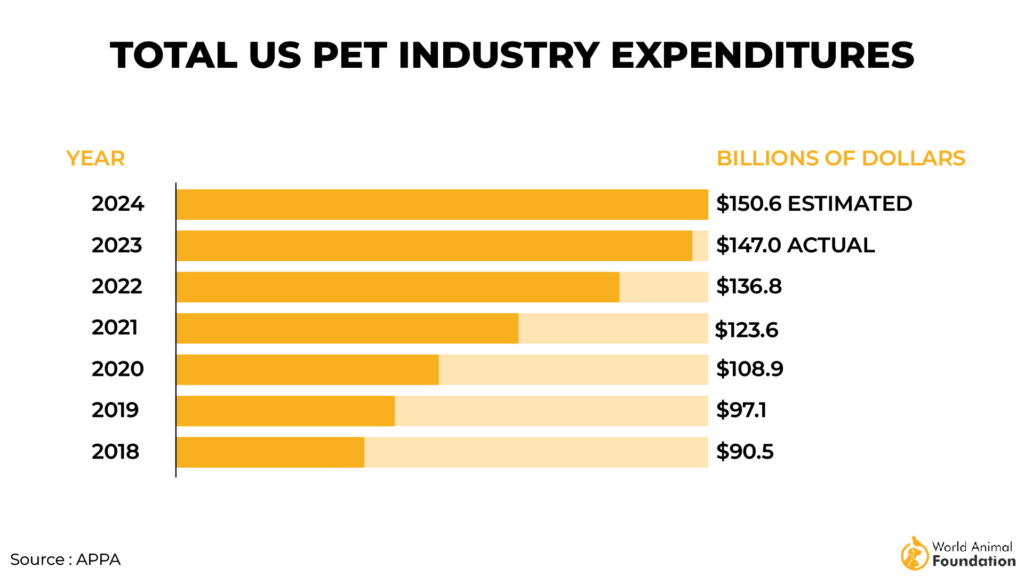
Pet Spending in the U.S. Increased from $460 in 2013 to $741 in 2022 (Bureau of Labor Statistics, Market Watch Analysis)
Although the pandemic drove pet parenting numbers to new heights, it also set new records for how much money we spend annually on our pets. Pet spending in the U.S. increased 67% from $460 per year in 2013 to $770 per year in 2021. In 2022, spending on pets reverted to an average of $741, primarily due to reduced expenditures among older generations.
Overall, the average dog owner is spending more on better or premium food, pet supplies, services like dog walking, medical insurance, and veterinary care. We also spend way more time with our pets.
In 2023, the Number of Insured Pets in the U.S. Has Increased by 17.1% (NAPHIA)
Since 2018, insured pet dog numbers have more than doubled since 2013. In 2023, the number of insured pets in the U.S. grew by 17.1%.
Since 2020, the average yearly increase in insured pets has been 22.6%.
The pet insurance segment saw an overall 22.1% increase over 2022, with dogs driving the growth, which only makes sense since people spend more on veterinarian dog care than on cats.
According to statistics, 78.6% of dogs are insured compared to 21.4% of cats. Who’s the cat’s meow now?
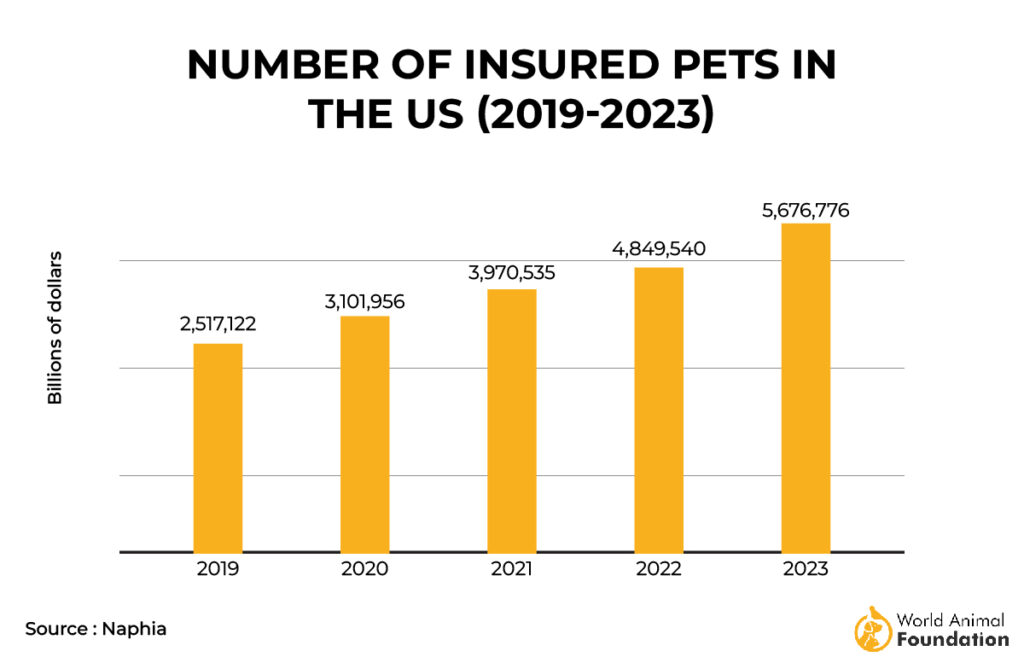
Almost 70% of Americans with Age 50 to 59 own a Pet (NCBI)
In America, it’s called empty nest syndrome once grown children move out. Married couples without children living at home spend more on their pets, while families with young children spend less. Renters owned fewer pets and spent less than homeowners by nearly three times.
The demographic of middle-aged and older people between 50 and 59 and 60 to 69 spend more than young adults under 25.
Pet Owners Aged 55–64 Spend $900/Year on Their Pets. (Bureau of Labor Statistics, BLS)
Pet owners aged 55-64 spent $900/year on their pets in 2022, with total spending ranging from $766 in 2021 to $1010 in 2020.
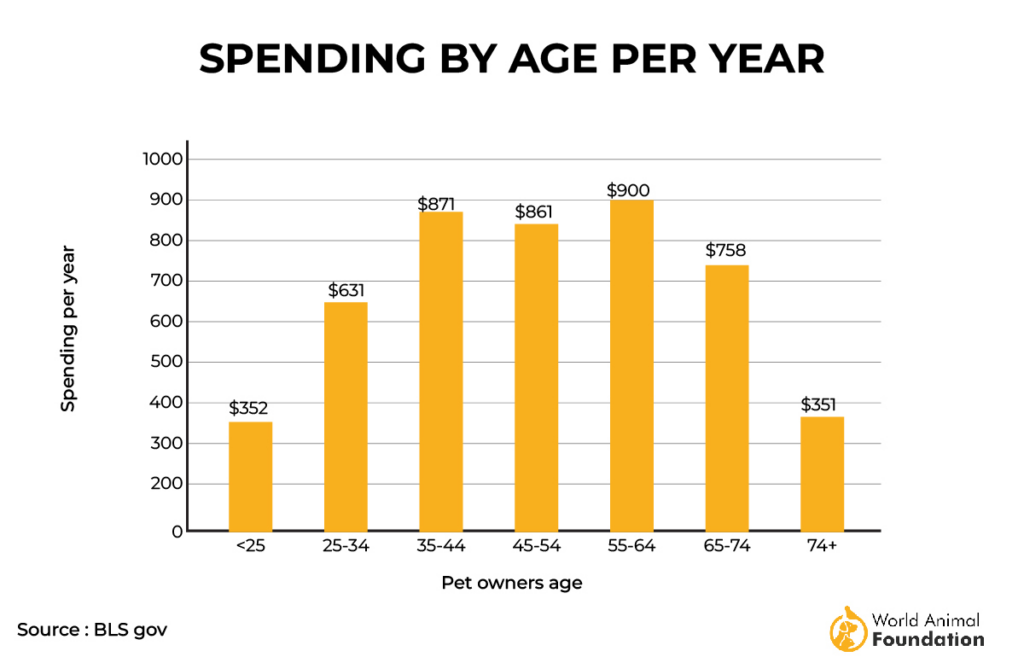
Pet Owners With $200,000+ Income Spend $1,455/Year on Pets. (BLS)
According to BLS Beta Labs, pet owners earning more than $200,000 income spent $1,455/year on pets in 2022. Even though total spending and average annual income decreased, pet spending habits increased.
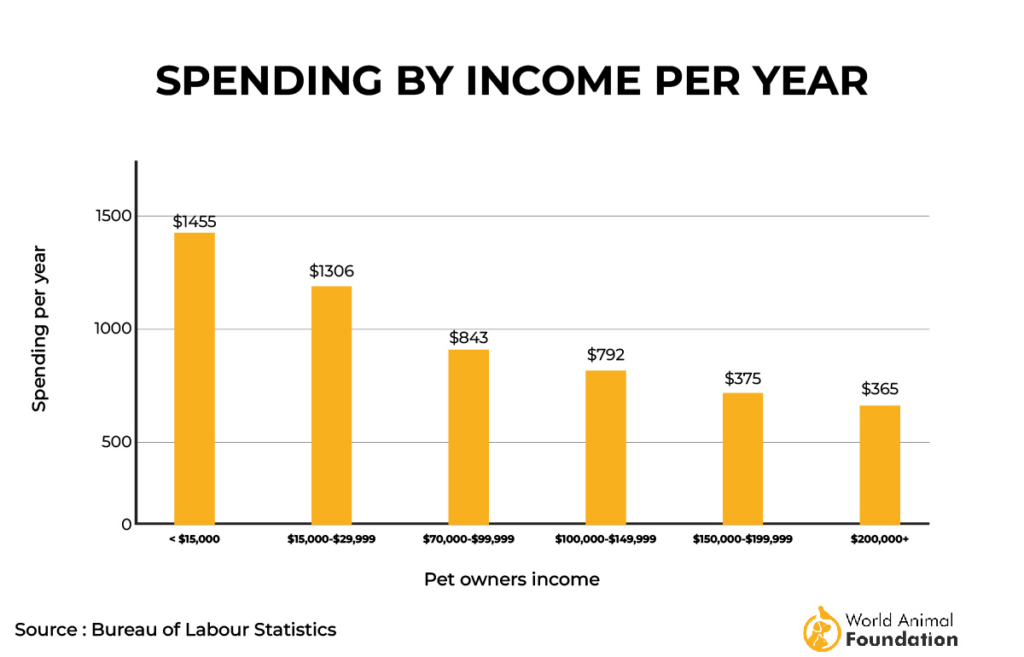
Pet Owners Who Have a Master’s Degree Spend $1,002 on Their Pets. (BLS)
Pet owners with a master’s degree spent $1,002 on their pets in 2022.
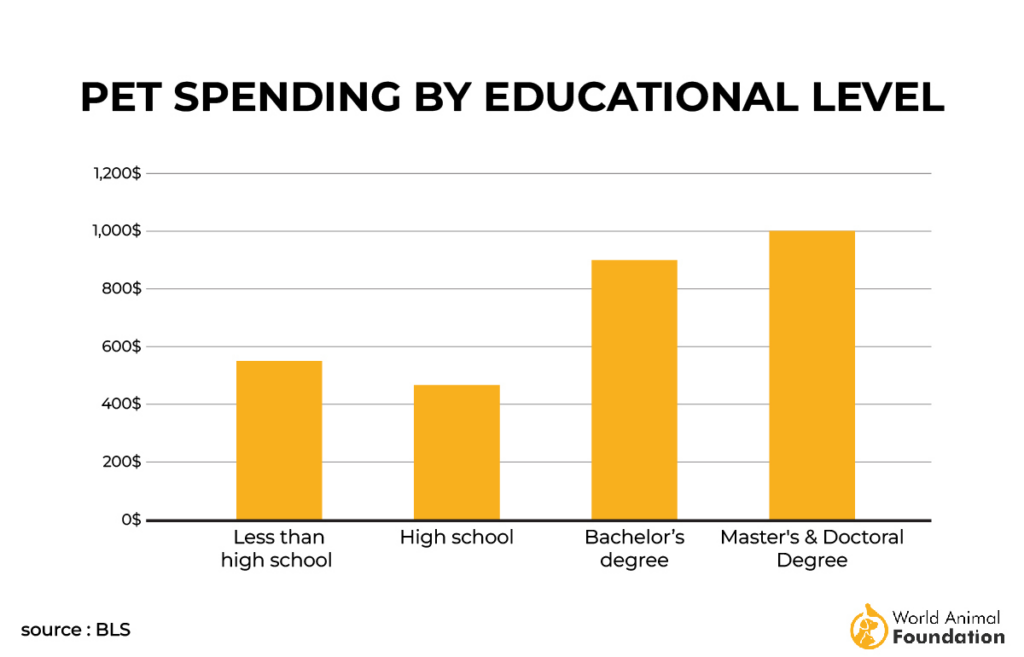
Black Americans Spend the Least At 0.3% on Their Pets (BLS)
Black American pet owners spend $272 annually on their pets. Understanding statistics is about something other than numbers. If you interpret the numbers, many black households have a pretax income of $12,500 to $37,000, and many live and rent apartments.
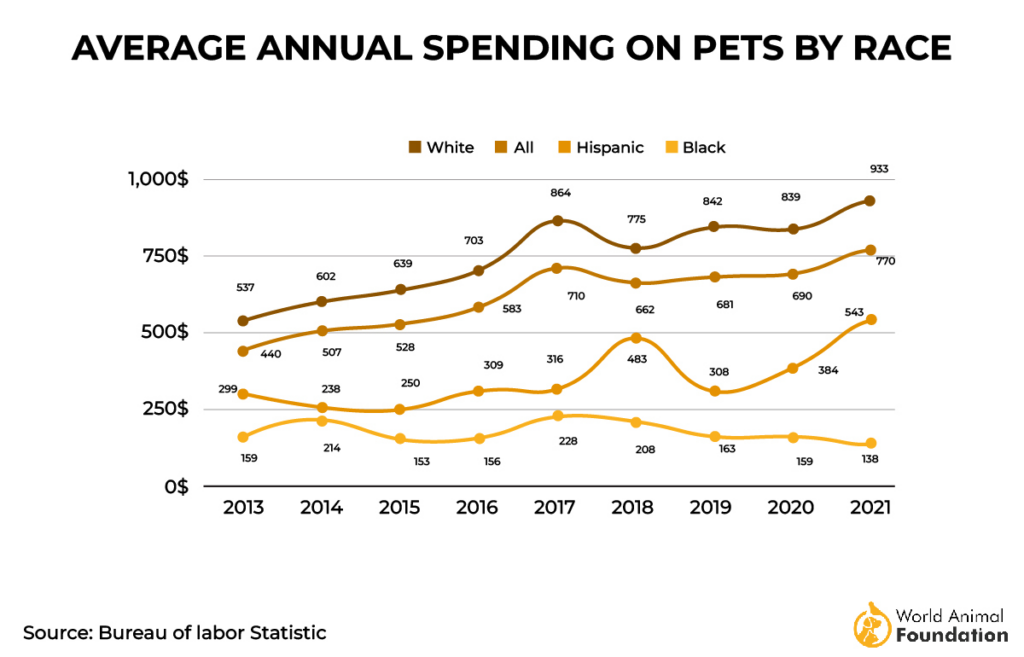
Dog and Cat Expenses

Dog Owners Spent $912, and Cat Owners $653 on Average. (Finmasters)
Annually, dog owners spend $912, and cat owners spend $653 on average. While the love of a pet is immeasurable, the basic annual expenses associated with ownership are significant.
Dogs Cost About $76/Month, and Cats Cost About $54/Month. (Finmasters)
This total amount covers items and services such as food, treats, vet visits, and grooming.
In 2023, Pet Insurance Averaged $640 for Dogs and $387 for Cats. (Business Insider)
Purchasing pet insurance for accidents and illnesses may be worth it, considering the potential costs of medical procedures. On average, it costs $53 per month for dogs and $32 for cats.
Dog Owners Spend an Average of $287 Yearly on Food, Compared to Cat Owners’ $254. (APPA)
Dog owners report spending an average of $287 yearly on food, compared to cat owners’ $254.
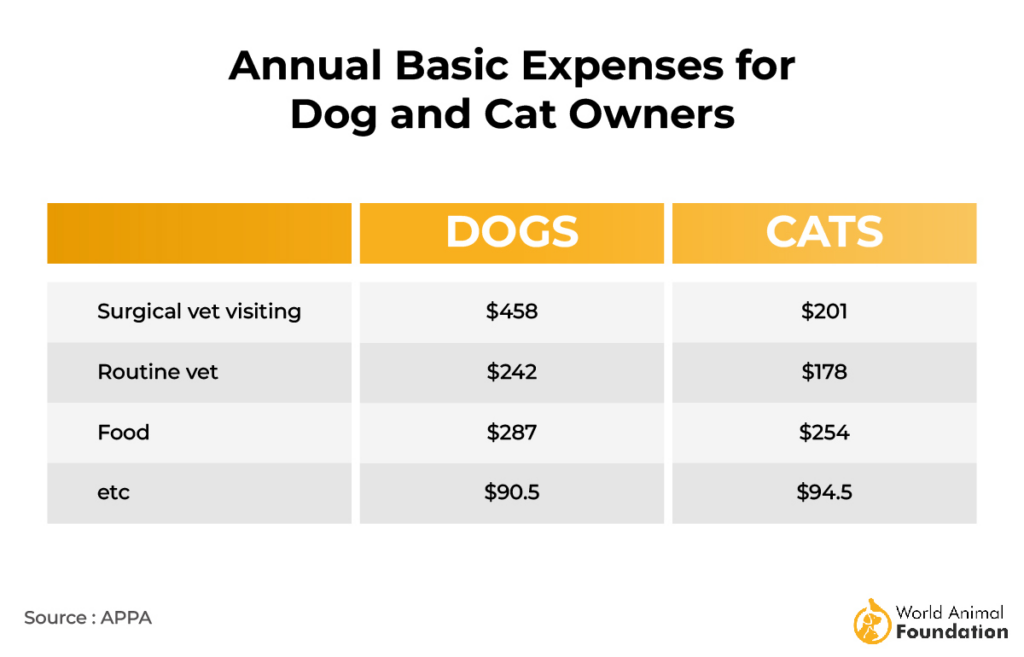
Pet Spending Statistics
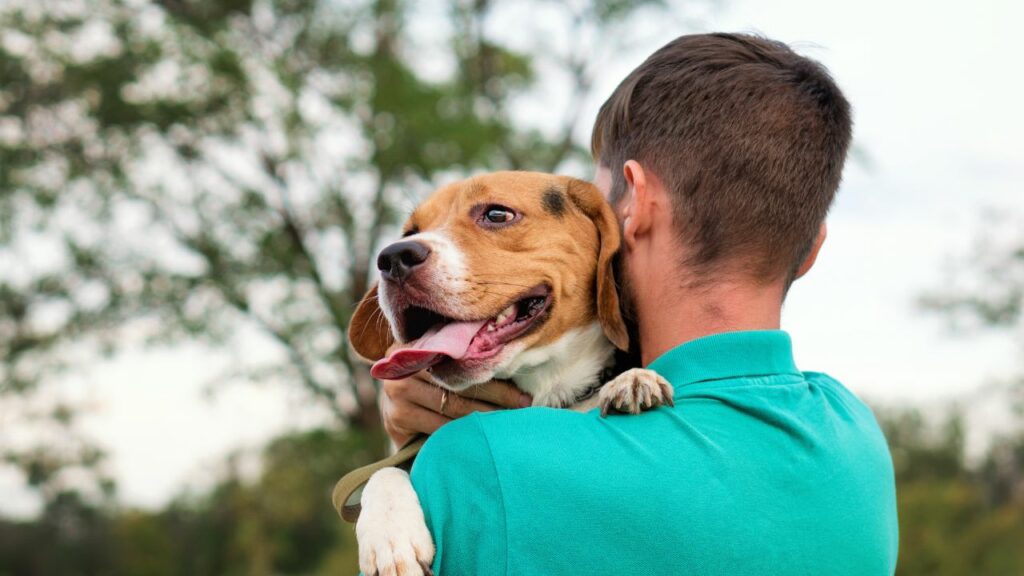
The Pet Care Market Was worth $246.6 Billion in 2023 and is Expected to Grow by $259.3 Billion in 2023 (Fortune Business Insights)
This figure is undoubtedly why many industries are compiling pet statistics in an effort to understand the habits of current pet owners and how they spend their money around the world.
The global pet care market was worth $235.32 billion in 2022, and with its substantial $246 billion price tag in 2023, the pet care market is still growing as more households own a pet. The pandemic catapulted ownership numbers. People turned to animals to fulfill a need, and we happily pay for a well-done job.
Experts who study trends like the Fortune Business Insights group predict that the animal food industry and the insurance and service providers will drive the category to reach $427.7 billion by 2032.
U.K. Pet Owners Spent 9.88 Billion Gbp Annually (Office for National Statistics U.K.)
Anyone who has ever traveled to the U.K. can attest that Brits take dog ownership seriously.
The pandemic also fueled pet ownership in the U.K. According to pet ownership statistics from the Office of National Statistics, the industry saw an increase of about 23% from 2020 to 2021 to 9.3 billion GBP.
U.K. pet owners spent 9.88 billion pounds in 2022, marking an 182% surge from the start of the survey in 2005. Over the past decade, spending on veterinary services in the UK has soared, notably in 2022, when expenditures on veterinary and other pet care services surpassed £5.3 billion.
The information also revealed that since the beginning of the data available from the ONS survey in 2005, there is a 270% increase overall. This does not include the significant budget Brits spend on wellies (rubber boots) to walk in the muck next to their canine.
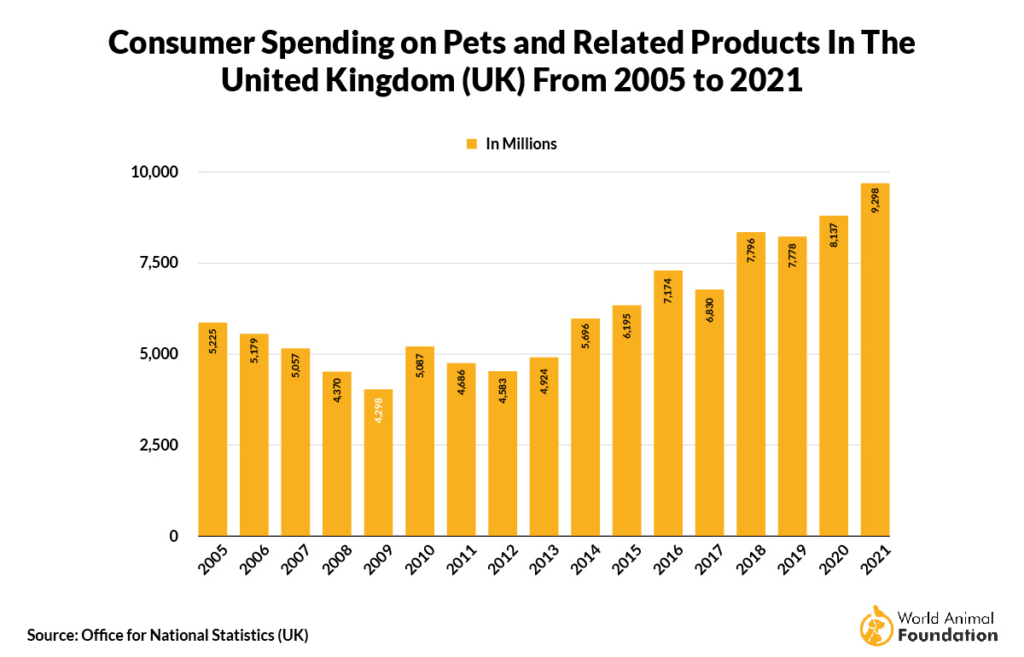
In 2020, Brits Spent 3.8 Billion Pounds on Vet Bills (Evening Standard)
An average vet visit costs around £40-£60 (USD 48.53 to 72.80); however, that doesn’t include any treatments or surgeries and is separate from other pet spending. U.K. pet owners shelled out £3.8 billion (USD4.61 billion) on veterinary care in 2020.
In Canada, the Average Budget for Pet Owners Is Estimated to Be $2,430 (CAD) Annually (HelloSafe)
It’s not just American pet owners who invest in pet care and pet services. Canadians increased their pet budgets by 17.11% in just three years on all animals, but the average dog and cat owner spend the most at USD 1818.43 annually.
From 2021 to 2024, the yearly cost to own a dog in Canada went up from $2,450 to $3,020. That’s a 23.3% increase in just three years.
Dog owners spend significantly more on their canines than the average cat owner, and budgets reflect that spending. Dog owners spend $762 (USD 570) more than on cats and $1917 (USD 1434.50) more than on pet rabbits (the third most popular pet).
Pet Parents in Canada Spend Almost $960 per Year on Veterinary Care for Their Dogs and $711 for Their Cats (Safehouse)
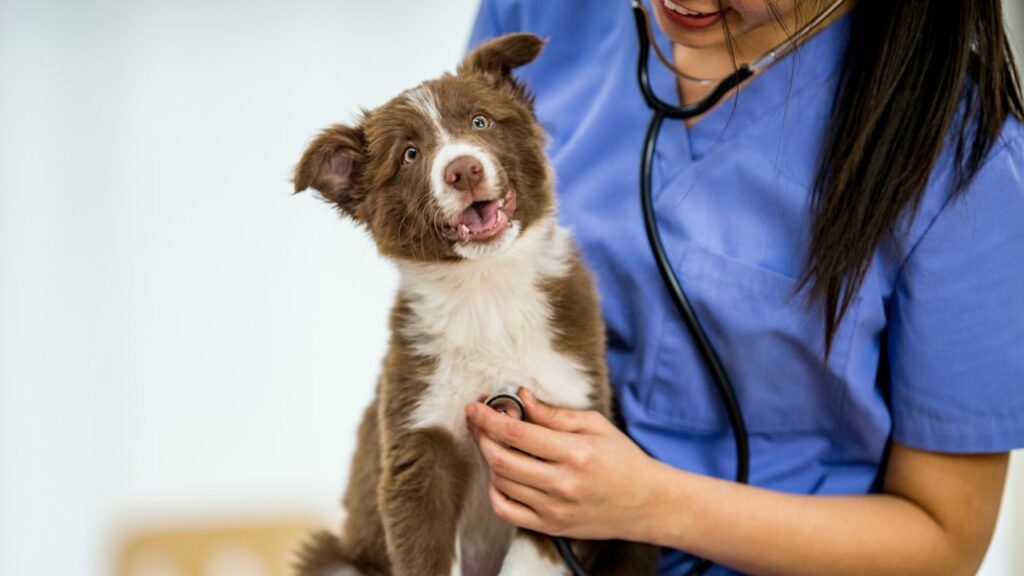
Canadians treasure their pets to the tune of over $ 9 billion pre-pandemic figures. In 2018, Canadians spent $2,075 on their pets, with a 17.1% growth over three years to $2,430. These figures don’t include the additional service fees for dog walkers, daycare, or pet boarding.
Pet Owners in the European Union Spent Around 29.1 Billion Euros on Pet Products and Services in 2022 (European Pet Food Industry)
Did you know that 46% of European households prioritize pet ownership and spend a grand total of €27.7 billion (USD 29.64 billion) to feed these hungry critters?
The European market has a significant cat population of 127 million, followed by a strong dog contingent of 104 million pet dogs. Further, there are 53 million birds, 29 million small animals, 22 million aquatic creatures, and 11 million reptiles. That’s a lot of pets. These household animals contributed to a 3.5% annual food sales growth.
Chinese Spent $31.89 Billion in 2020 on Their Pets (Radii)
Interestingly, according to the government’s Ministry of Civil Affairs, the ‘singles’ population is now 240 million.
That number is significant because these singles reflect the values of millennials who no longer follow family traditions. Many are opting for pet parenting over traditional family, and 33.7% of singles are pet owners, according to a 2020 Pet Industry Paper. This makes them a pet spending target for the pet industry.
Pets are becoming substitutes for relationships and families in a thriving pet consumer market, and pet parents spend willingly and lavishly on their pets. And you can ascertain this trend after learning how much money it costs to own a dog!
Australians Spent $33.2 Billion on Their Pets in 2022 (Pet Food Industry)
There are an estimated 28.7 million pets in Australia, and 69% of households (up from 61% two years ago) are driven by a rise in dog ownership.
Although the pandemic was a catalyst, it allowed people the time to invest in a new pet. Australians spend even more than Canadians on dog ownership at $3200 annually and $2100 on felines.
As many as 37% of people found budgeting and understanding the costs of pet parenting challenging. Dog owners spend twice as much as cat owners based on AMA survey participants.
Who is Spending the Most on Their Pets
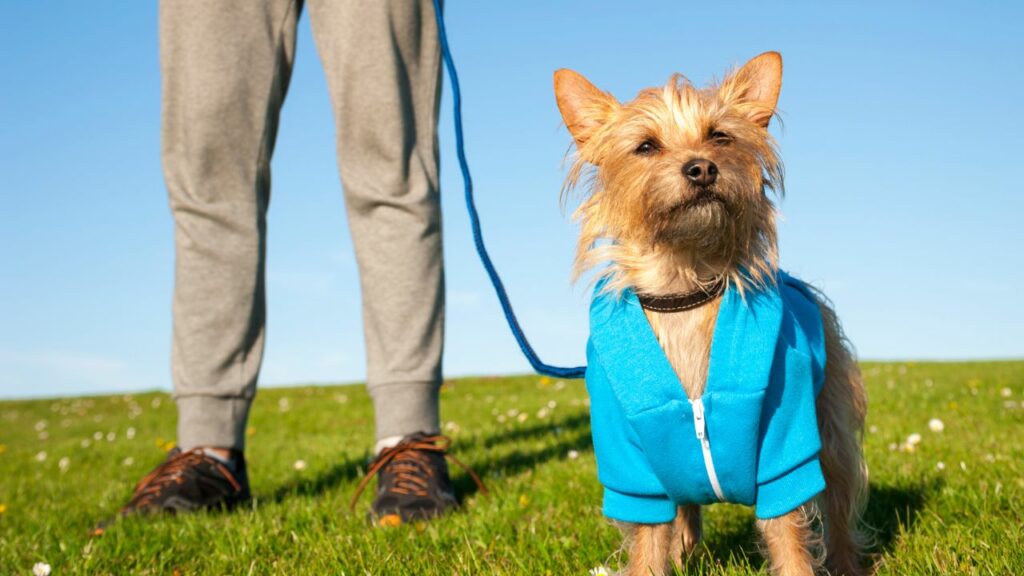
33% of Millennials Own at Least One Pet (APPA)
According to the American Pet Products Association survey, 33% of millennials own at least one pet. Millennials view pets, especially dogs and cats, as integral members of their family.
Dogs Influenced 42% of Millennial First-Home Purchases. (Forbes)
Thirty-three percent of first-time millennial homeowners cited the desire for improved space or a yard for their dog as a factor influencing their decision to purchase a home.
47% of Gen Z pet owners spend on pets for social media posts. (AAHA)
A significant number of pet owners prioritize showcasing their pets online, with 28% making special purchases specifically for posting about their pets on social media platforms overall. The younger the pet owner, the more likely they are to spend money on social media. 47% of Gen Z pet owners spend on pets for social media posts.
U.K. Adults Age 50-64 Spend the Most on Their Pets (Statista)
Economic times are tough for Brits now; they’re amidst a financial meltdown and increasing inflation and cost of goods. The average household of 50 to 64-year-olds still spent £8.4 on food and other expenses.
The 75 years and older senior group spent £3.70 per week. While younger generations, 30 and under, paid £3.90.
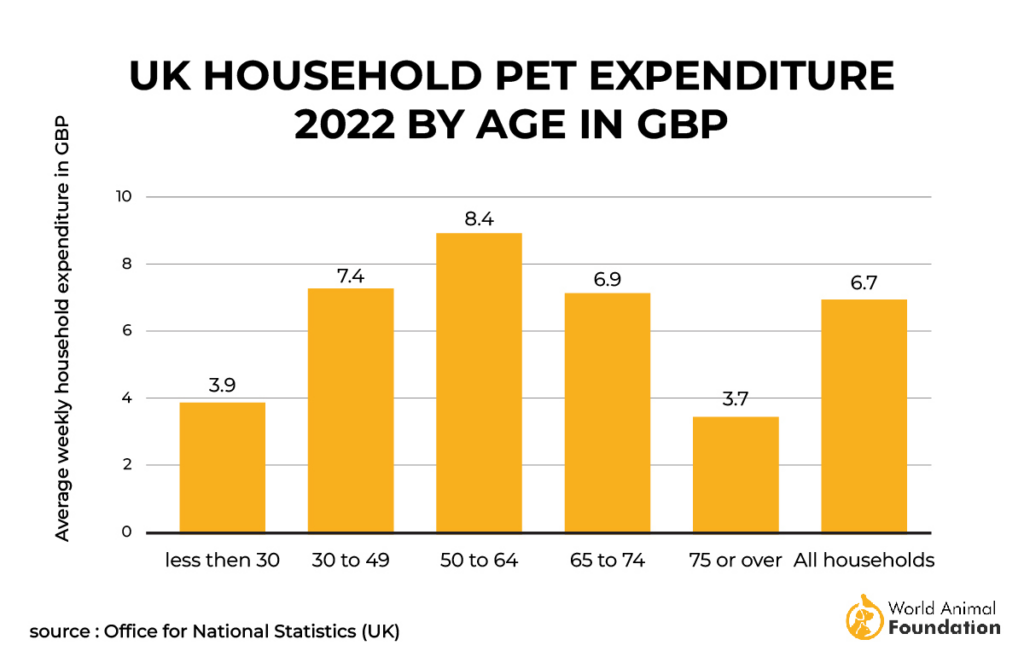
Americans Between 35-44 Years Spend Almost $137 per Month on Their Pet (OppLoans)
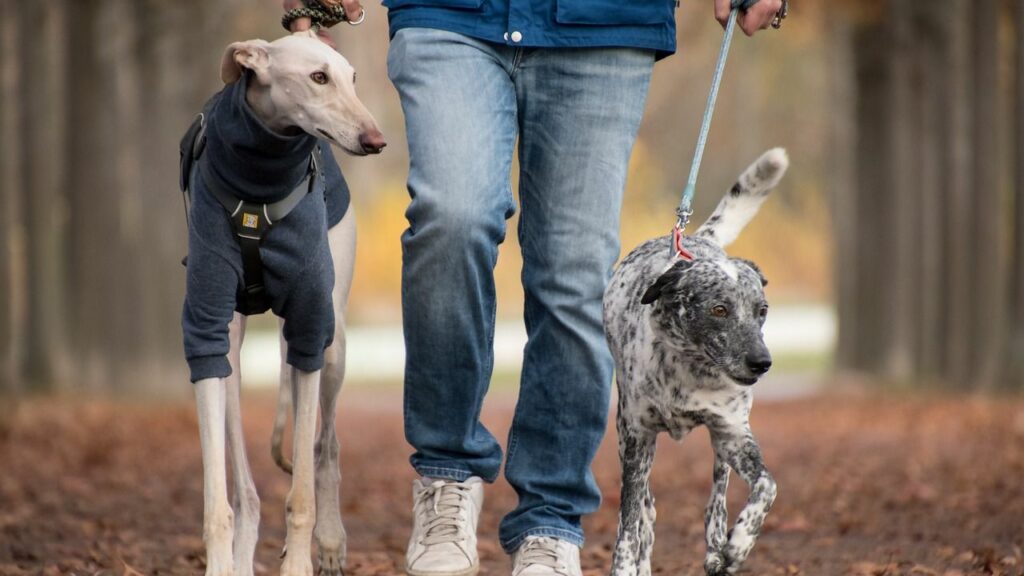
In a recent OPPLoans survey, it’s been revealed that the 35-40-year-old age group spends $137 a month on their favorite pet. One in five admitted they spend more than they earn.
The New Pet Owners in the U.K. Are Between 16-34 Years Old (PFMA)
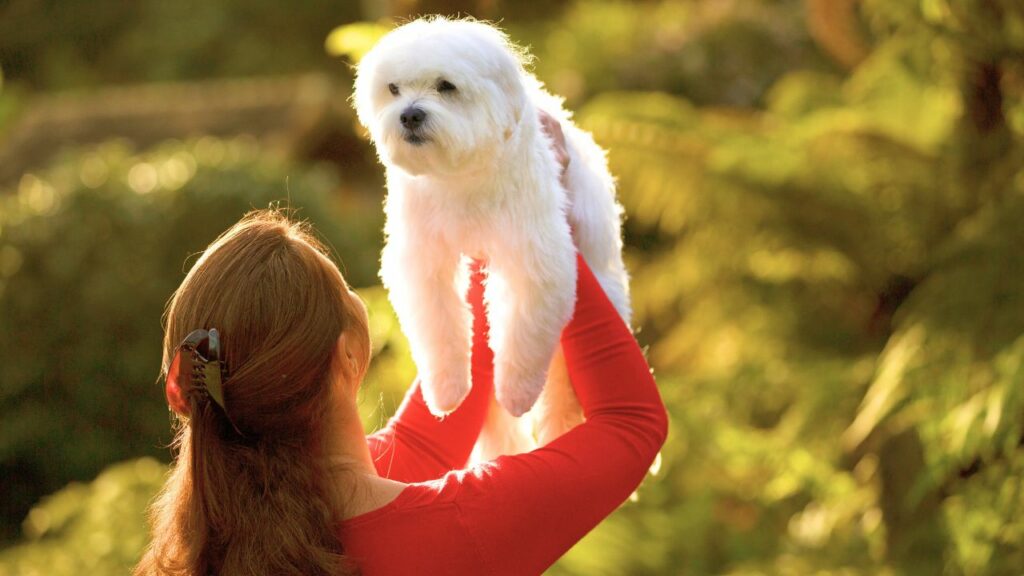
The U.K. has always been a pet-loving nation and is the first to recognize animals as sentient beings. Approximately 23 million cats and dogs live in almost 17 million British households and 3.2 million of those found homes during the pandemic. Gen Z and Millennials (aged 16-34) took up 59% of new pet owners.
45.1% of Chinese People Born Between 1995-1999 Own a Pet (Radii)
Interestingly, this generation, born between 1990 and 1999, is 38.1% of pet owners in China. The younger demographic of this generation (post-2000) has a 28.9% ownership share.
What Do Pet Owners Spend the Most Money On
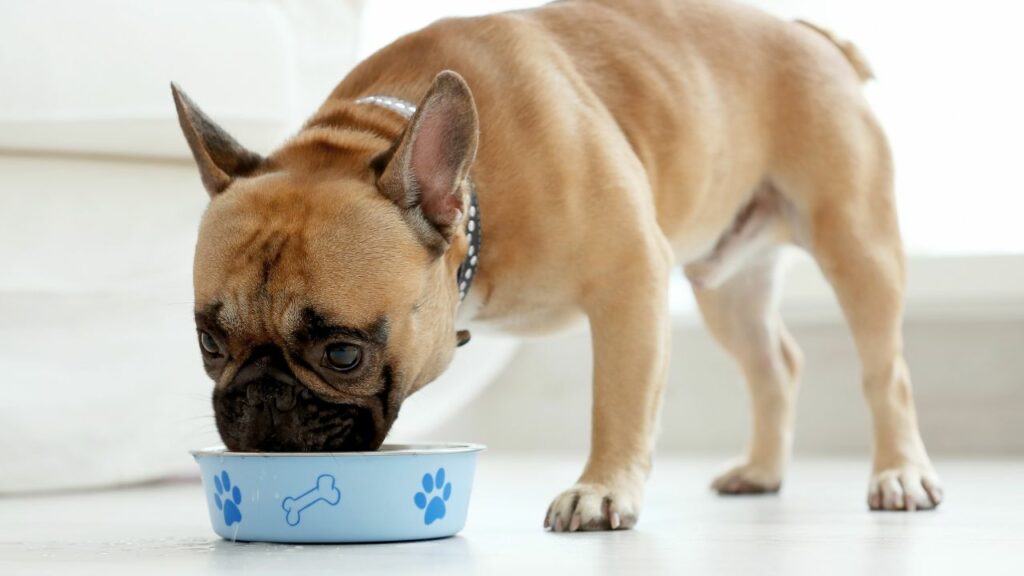
Americans Spent $64.4 Billion on Pet Food and Treats in 2023 (APPA)
The Pet Food Industry is growing, and over $64.4 billion in food and pet snack sales from U.S. pet households have been recorded. For comparison, Americans spent $58.1 billion on pet food and treats in 2022.

Americans Splurge $1.7 Billion and $4.8 Billion to Buy Candy and Jewelry as Valentine’s Gift for Their Pets (NRF)

A record-breaking one in five individuals (21.2%) plan to include their beloved pets in their Valentine’s Day celebrations, with an average spending of $5.28 each, totaling a substantial $703 million on various small gifts.
53.2% plan to buy candy for their pets.
45% of the Pet Owners Spent the Same on the Pets’ Health As They Spent on Themselves. (LendEDU)
Some possible explanations for this trend may involve individuals prioritizing their pets‘ health and dental appointments over their own or possibly neglecting their own health needs in favor of caring for their pets.
Pet Industry Worth
- In 2023, the pet care e-commerce market was 23.6 billion. By 2030, global pet care e-commerce is expected to grow to $49.6 billion.
- At the end of 2022, the US pet insurance market surpassed $3.2 billion in gross premiums. While the U.S. pet market still sees double-digit growth, the pace slowed slightly in 2022, showing a year-over-year variance of 24.2%.
- The dog walking services industry revenue was $1.3 billion in 2023. The dog walking services industry experienced a 0.3% increase in market size in 2023.
- The global market for pet clothing was worth $5 billion. The market is expected to reach $7.0 billion in 2028 from $5.17 billion in 2021, with a Compound Annual Growth Rate (CAGR) of 4.4%.
- The pet industry in Latin America crossed $10.7 billion in 2023. The pet care market is projected to reach US$ 18.1 Billion by 2032, with a growth rate (CAGR) of 6.03% during 2024-2032.
FAQs
What Demographic Spends the Most Money?
Despite millennials being stereotyped as pet-obsessed, BLS data reveals they spend less on their pets annually compared to Generation X and boomers. While Generation X spends the most in total, they allocate the least proportion of their income. Conversely, Baby Boomers spend the most relative to their income.
What Is the Most Popular Pet in the United States?
According to the APPA, dogs are the most popular pets in the U.S., with 65.1 million households owning a dog, followed by cats (46.5 million households) and freshwater fish (11.1 million households).
What Is the Average Monthly Cost for a Dog?
The monthly cost of owning a dog can vary significantly, ranging from $40 to $290. For a more personalized estimate, you can use our cost of owning a dog calculator to assess the specific expenses associated with dog ownership.
How Much Does a Dog Cost?
For new dog owners, upfront costs can vary from $1,144 to $5,360. Annual expenses for basic essentials range from $560 to $3,860. Additionally, optional extras for most dog parents can cost between $500 and $5,000 per year.
How Many Pets Are There?
It’s estimated that there are over a billion pets worldwide, with families in the U.S., Brazil, EU, and China accounting for over half a billion dogs and cats combined. Moreover, more than half of the world’s population is believed to have a pet at home.
How Many People Own a Dog?
According to Statista, dogs emerged as the most popular pet worldwide, with over 470 million kept as pets globally. During the same period, there were approximately 370 million pet cats worldwide.
Wrap Up
Owning a pet is a privilege and not a right. However, that doesn’t mean that only wealthy households can be pet parents. Dogs, cats, and other pet animals require shelter, food, protection, vet care, and oodles of love.
The pet premium food industry sees enormous opportunities in increasing gourmet food sales and designer pet garments, and the pet insurance market is still severely underdeveloped in most countries and for most pets.
Understanding which households own a pet and pet spending statistics, as well as pet owners’ habits, are vehicles to drive growth.
This entire article was written while throwing a ball for one smart dog! 😊


